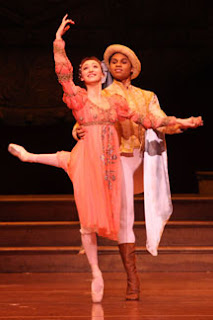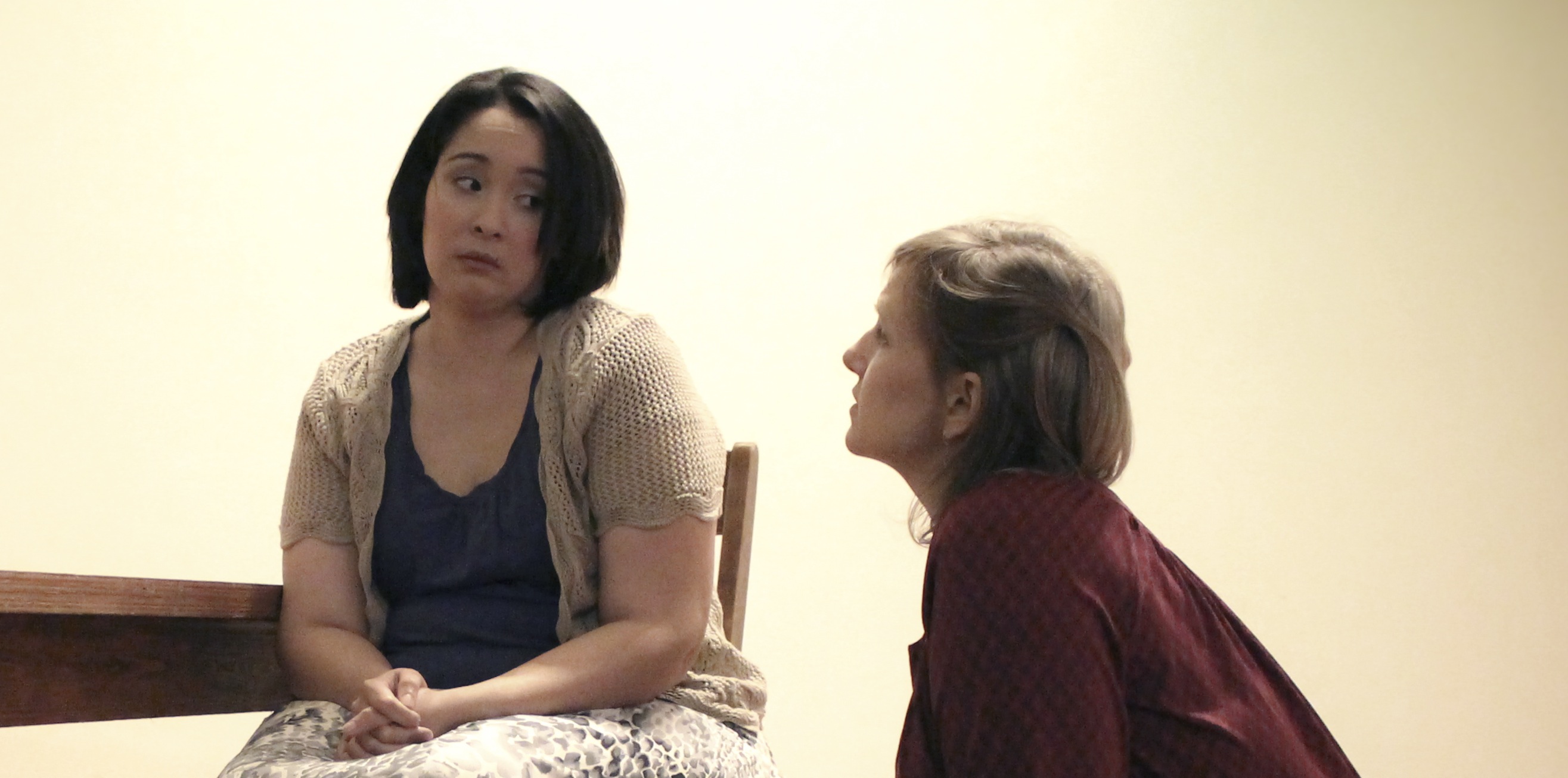+and+Brandon+Ragland+(Paris)++in+Romeo+&+Juliet.+Photo-Louisville+Ballet.jpg) |
| Natalia Ashikhmina (Juliet) and Brandon Ragland (Paris) in Romeo & Juliet. Photo – Louisville Ballet. |
Romeo & Juliet
Music by Sergei Prokofiev
Choreography by Alun Jones & Helen Starr
A review by Kathi E.B. Ellis.
Entire contents are copyright © 2013 Kathi E.B. Ellis. All rights reserved.
Romeo & Juliet has been one of the most enduring of love stories since Shakespeare introduced the star-crossed lovers in the 1590s. And I confess that I come to this performance by way of stage productions, including an excellent adaptation by Moses Goldberg for Stage One (about a decade ago) and West Side Story(coming to Louisville audiences as part of this season’s PNC Broadway in Louisville series), as well as familiarity with the Cranko and McMillan ballet versions from growing up in England. According to the program, it is more than a decade since the Louisville Ballet danced this Romeo & Juliet, choreographed (ca. 1980s) by former Louisville Ballet Artistic Director Alun Jones.
This Romeo & Juliet, set to Prokofiev’s sprawling 1935 score, is visually sumptuous, including the costumes, which Mr. Jones also designed (with John Truscott). The set is a unit set (designed by Wally Coburg) with high arches starkly framing the action and two banks of steps affording sweeping entrances. Changes of location are accomplished with, for the most part, moving elements that are flown in. Some of the set changes were lengthy, and I wondered if they were filling out the music, until there was one in which the audience sat in the dark and in silence. Because of the fluidity of set pieces, it would be preferable to allow the audience to witness the transitions, staying connected to the action, rather than “dropping out” in semi-blackouts.
At the Saturday matinee the role of Juliet was danced by Erica De La O and the role of Romeo by Douglas Ruiz. Ms. De La O embraced the range of Juliet from young, carefree teen through falling in love with Romeo, onto the realization of their parting and her decision to die with him. It has been a joy to see Ms. De La O deepen her interpretation of dramatic roles, and her Juliet is light and lissome in the early scenes and becomes more stark and sinewy as the fear of Romeo’s departure sinks in. Mr. Ruiz’s Romeo came into its own by the balcony scene. Romeo’s early scenes rely on traditional mime to set up the romance with Rosaline; and even the playfulness between him, Mercutio (Kristopher Wojtera) and Benvolio (Kazuki Ichihashi) seemed studied and mannered rather than lusty and filled with braggadocio. Yet by the balcony scene, Mr. Ruiz’s energy and lyricism came to the fore, and the dawn scene with Ms. De La O was heartbreaking in the couple’s desire to eke out more minutes together. His final act solo with the dead Juliet is powerful and disturbing, as Romeo cannot let her go, continuing to dance with her as if she were still alive.
The ballet version of Romeo & Julietcreates scenes that are unfamiliar to those whose reference point is Shakespeare’s version. Prokofiev has composed extended divertissements for the citizens of Verona including, in Mr. Jones’s version, several for children who span the range from athletic – a lot of tumbling, to cute – a lot of skipping. While it is always good to see junior dancers on stage (and the experience they glean from being part of a professional production is invaluable), these motifs lacked the energy necessary to create a bustling market or carnival. The same is true of the act two wedding inserted into the carnival. While it is clear that Mr. Jones is influenced by the Cranko and McMillan versions, these crowd scenes have less focus than the busyness and specific activity of the earlier creations. A divertissement most delightful is that of the traveling players led by Amanda Diehl and Evgeni Dokoukine. Ms. Diehl always brings a bright, joyous aspect to her dancing and here she illuminated the stage and, with her partner, created a space for the sparkling divertissement by the corps of traveling players. Ryan Stokes provides a moment of suspended breath with impressive juggling routines at the carnival.
Paris (Brandon Ragland) is also given a more extended role, including a pas de deux during the ball with Juliet that is interrupted by Romeo. It was lovely to see the gesture of “And palm to palm is holy palmers’ kiss” introduced during the Paris-Juliet duet and then iterated between Romeo and Juliet, and not only during the ball scene. At the ball, the formal dances had a richness and weight to them, which echoes the long tradition of story ballets over more than two centuries. For me, a highlight of any version of Romeo & Juliet is the death of the Mercutio character. On Saturday afternoon, this did not happen. Maybe I brought in the wrong expectations; maybe Mr. Wojtera is miscast; maybe there is more emphasis on the conflict between Romeo and Tybalt (Eduard Forehand) in this interpretation. Whatever the cause, I was aware of only the play-acting during Mercutio’s death sequence and not the growing, unexpected, difficult-to-mask realization that the pain is real and that death is a very likely outcome. The fight choreography by former Louisville Ballet dancer Dale Brannon is muscular and effective.
An impressive element of this production is the addition of 45 performers drawn from the community to the regular roster of the Louisville Ballet’s professional corps and Trainee Company. That many of these extras have performed many times with the Ballet is a tribute to the role of the company in our community, and we can hope that the children will grow into other productions and characters as they mature as dancers. Nonetheless, there were times when the stage felt weighted down by the sheer number of bodies, creating more of a museum piece, an homage to the traditional story ballets, rather than a dynamic, living story. And yet the current dancers of the Louisville Ballet have passion and dynamism, which they display in contemporary and classical pieces. Just as West Side Story electrified our expectations of Shakespeare, maybe it’s time for the next generation of choreographers to shake up our expectations of Prokofiev’s complex score.
Note: At the other performances, Juliet was played by Natalia Ashikhmina, Romeo by Ben Needham-Wood, Tybalt by Phillip Velinov.
March 1-2, 2013
Louisville Ballet
Whitney Hall, Kentucky Center
501 West Main Street
Louisville, KY 40202
502-584-7777




